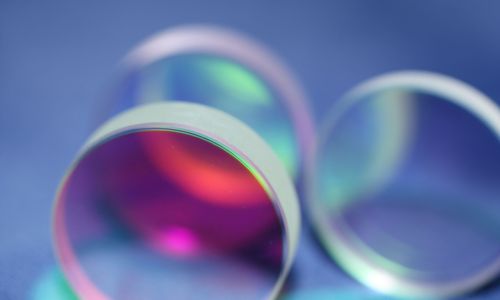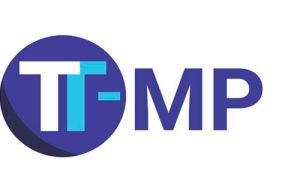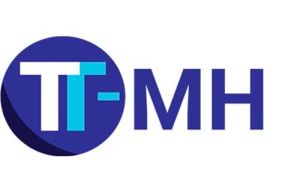
TT Ultrafast Laser Mirrors for Dispersion Control and High-Energy Applications
Ultrafast laser mirrors are specialised optical components designed to manage the unique demands of high-energy femtosecond and picosecond laser systems. Unlike standard mirrors, their performance is defined by a critical balance: providing precise dispersion control without compromising the high laser-induced damage threshold (LIDT) needed to withstand extreme peak powers.
These mirrors are essential tools for demanding scientific and industrial applications, from materials processing to microscopy. That’s why we developed our TT range of dedicated ultrafast laser mirrors, engineered to deliver the high reflectivity, low group delay dispersion (GDD), and high LIDT that your system’s performance depends on.
When is a MPO Ultrafast Mirror the right choice?
Customers choose our semi-standard ultrafast mirrors for proven performance in applications where managing pulse dispersion and handling high peak powers are the primary requirements. For common laser systems, such as Ti:Sapphire and Ytterbium, we help you select the optimum mirror to ensure your system performs as intended.
What are Ultrafast Laser Mirrors?
In ultrafast laser systems, the primary challenge is to maintain the temporal integrity of the laser pulse as it travels through the optical path. When a femtosecond or picosecond pulse passes through standard optical components, it experiences an effect called group delay dispersion (GDD). This causes different frequency components (colours) of the pulse to travel at slightly different speeds, resulting in the pulse spreading out in time – an effect known as temporal broadening.
Our ultrafast laser mirrors are engineered specifically to solve this problem. Their dielectric coatings are specifically designed not only for high reflectivity but also to precisely manage GDD.
- Low-GDD mirrors are designed to be “dispersion neutral”. They reflect the pulse with minimal impact on its duration, making them ideal for simple beam steering where no correction is needed.
- Negative-GDD mirrors, often called chirped mirrors, are designed to actively correct for dispersion. They introduce a precise amount of negative dispersion to compensate for the positive dispersion introduced by other optics in the system, effectively “re-compressing” the pulse back to its original duration.
Key Features of THE TT range of Ultrafast Mirrors
- Exceptional reflectivity: Our dielectric mirror designs, such as the TTS and TTB ranges, are engineered to deliver a reflectivity of >99.9%, maximising laser power and ensuring minimal energy loss within your system.
- Precise dispersion compensation: We provide coatings with a group delay dispersion (GDD) of <20fs², preventing pulse broadening and maintaining the temporal integrity of the laser pulse. This is a key feature of our dielectric ranges, including the TTS, TTB, and TTW mirrors.
- High peak power handling: Our mirrors are proven to withstand the intense power of high-energy lasers, featuring a high laser-induced damage threshold (LIDT) of >100J/cm². This resilience is a core characteristic of our flagship TTS range.
- Broadband performance: We offer multiple solutions for broadband applications. The TTB and TTW ranges use advanced dielectric coatings for broad reflectivity, while our TTMH (metal hybrid) and TTMP (protected silver) mirrors provide ultra-broadband performance suitable for a wide range of ultrafast laser applications.
- Exceptional surface characteristics: All our mirrors are polished to a high degree of flatness with exceptionally low sub-surface damage. This ensures ultimate wavefront performance, maintaining beam quality and preventing distortion for accurate and focused laser beams.
- Durable Construction. Our components are built to withstand harsh environmental conditions – including high temperatures, different gas environments, vibrations, and shocks – for long-lasting, reliable performance.
The MPO Advantage
Our mirrors are the culmination of decades of expertise and an unwavering commitment to quality. We use advanced manufacturing techniques and rigorous quality control measures to ensure that each mirror meets the highest standards of performance and reliability.
The TT Range
TTS
The TT range of mirrors is designed to offer an uncomplicated, low coating stress, high LIDT, low GDD design suitable for a wide range of applications and aimed at very high-power applications.
TTB
The coating design developed for the TTB range provides a broader reflectivity bandwidth than the TTS range while maintaining low group delay dispersion (GDD) and high LIDT.
TTMP
TTMP mirrors have a protected silver coating optimised for the use with ultrafast components
TTMH
The TTMH feature an enhanced metal hybrid coating, offering ultra broadband reflection and high LDT from a dielectric overcoating. If you need reflection at non-Tisa ranges, for alignment or diagnostics then this is the perfect option.
TTW
The TTW range of mirrors, like the TTB range, is based on a specialist coating designed to offer a very broad reflectivity bandwidth based only on dielectric coating materials while maintaining a low GDD and high LIDT.
Looking for Other Mirror Types?
For an overview of all our mirror capabilities, including custom options for specific laser lines, please visit our main precision Laser Line Mirrors category page.
Frequently Asked Questions
What is group delay dispersion (GDD)?
GDD is an effect where different frequency components of a short laser pulse travel at slightly different speeds through an optical medium, causing the pulse to spread out in time (temporal broadening). Ultrafast mirrors are coated to compensate for this, preserving the short pulse duration.
When do I need a negative-GDD mirror?
You need a negative-GDD mirror to compensate for the positive dispersion introduced by other optical elements in your beam path, such as lenses or prisms. This effectively “re-compresses” the laser pulse.
What is the difference between an ultrafast mirror and a standard dielectric mirror?
While both use dielectric coatings, ultrafast mirrors have a more complex coating design specifically engineered to control GDD across a specific bandwidth. Standard mirrors are only optimised for high reflectivity at a single wavelength and do not control for dispersion.
Discuss Your Requirements
We offer a wide range of standard ultrafast mirrors, but our aim is to meet our customers’ needs, no matter how challenging. If that means designing and fabricating a custom solution for your specific requirements, then that’s what we do. Contact our technical team to discuss your application.






